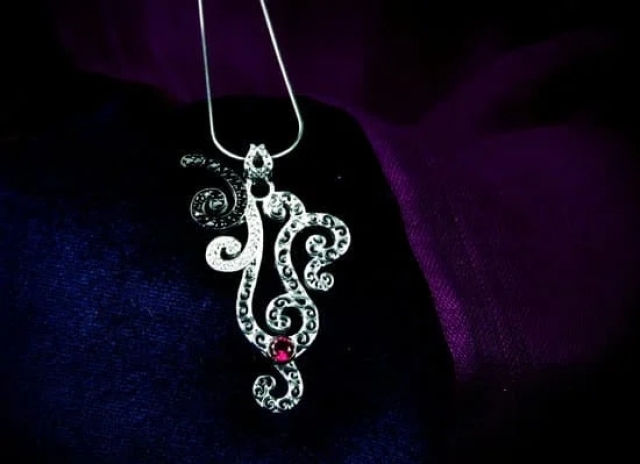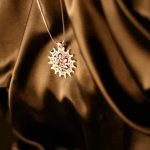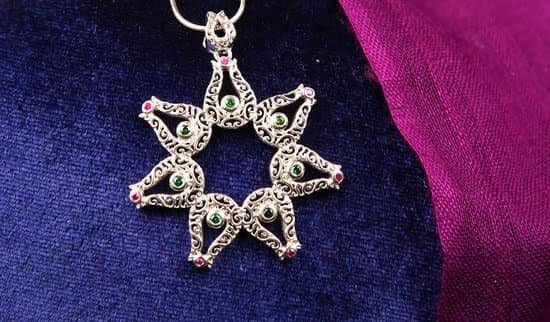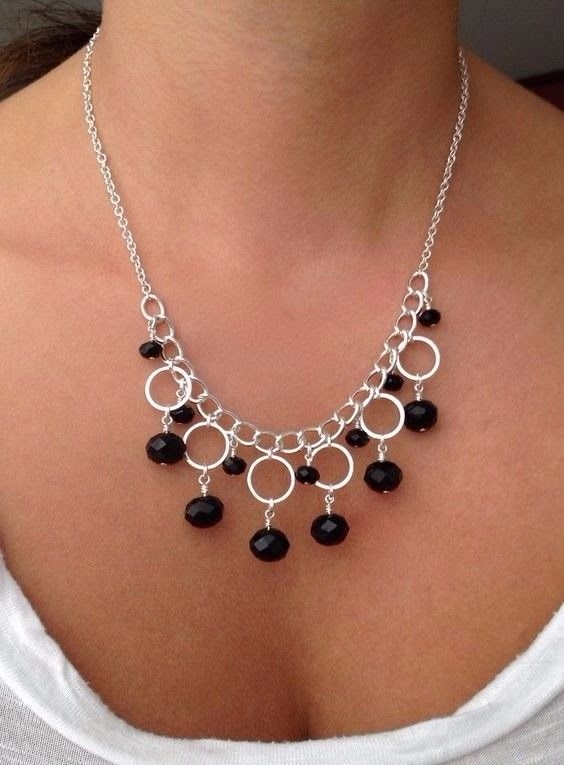The first piece of jewelry in history is something that has long been debated among archeologists and historians alike. From the traditional perspective, jewelry was a symbol of status, where only the wealthy or powerful were able to possess such luxury items. Today, however, jewelry is seen as an accessory for all genders and ages that can really enhance an outfit. Jewelry is no longer indicative of one’s wealth but rather an expression of personal style.
In its early days, jewelry was made with materials like seashells, stones, flint knives and other materials found in nature. These pieces had spiritual significance and would have had some totem element to them. Some significant designs included circles which symbolized eternity, spirals for navigation to new lands and places and crosses or transverse lines representing communication between worlds on earth. Little is truly known about these ancient pieces due to the perishability of many materials used in their construction.
A few thousand years later and we see evidence of fine metalwork becoming increasingly popular. Gold was particularly popular being associated with royalty across multiple civilizations including those from Asia, South America, North America and Africa. Religious amulets containing precious stones became commonplace throughout Europe during this time too.
However it wasn’t until the Medieval Period that distinct forms of jewelry truly started to emerge as we would recognize them today. Ornamental brooches were quite ornate with intricate symbols usually featuring birds or animals carved from gold or silver often accompanied with precious gemstones like pearls or rubies depending on one’s status.
As centuries went by each culture added their own flourish to the practice of creating intricate pieces leading up to what we now call modern day jewelry culture which features both mass produced inexpensive pieces ideal for daily fashion statements along with bespoke precious metal designs indicative of wealth found all over the world today.
Definition of Jewelry
The oldest objects classified as jewelry are simple beads, most likely made from shells and animal bones. Historians have identified primitive bead necklaces in Africa dating back 75,000 years ago. Scientists suggest that early jewelry was used for spiritual or symbolic purposes – possibly to indicate status or identity, emphasize beauty, provide protection or even denote healing powers.
As civilizations evolved so did the use and design of jewelry. It ceased to solely be functional and became a means to show financial wealth. Fashion began to influence both materials used in jewelry production and the forms designs were made into, ranging from geometric shapes to insects and animals models.
Gold jewelry had become especially popular during the Egyptian time with motifs of deities including Anubis statue on pectorals and cobra-shaped earrings adorning their wears. During China’s Han dynasty (206BC – 9AD), crafting techniques enabled them to make intricate pieces featuring mythical creatures including cicadas, lingzhi symbols (an ancient mushroom symbolizing wealth) and dragons sculptures cut into gold plaques which were worn on belt buckles by nobles who believed it provided protection.
European nobility followed suit in the 17th century opting for large opulent jewels containing precious stones such as rubies which fulfilled both religious significance as well as expressing luxury statuses.
The late 19th century saw a major shift in attitudes towards design leading to efforts to blur the lines between expert artistry and craftsmanship within jewelry design with pieces such as Rene Lalique’s delicate acrobat figures suspended inside glass cabochons moving away from more traditional heavy realizations featuring precious stones encased in mostly gold setting like previous centuries before it.
Subsequently this attitude has translated into contemporary attitudes toward modern precision crafted colorful resin settings embedded with semi-precious stones creating joyful rings,bracelets and pendant necklaces favoring lightness over extravagance seen in historical counterparts
- Simple beads made from shells and animal bones found 75,000 years ago.
- Jewelry intended for spiritual/symbolic purposes.
- Expansive range of materials used throughout history.
- Egyptian Jewelry heavily influenced by gods; shown through motifs.
- China’s Han Dynasty popularized intricate cuts with mythical creatures.
- 17th Century Europeans chose large opulent jewels featuring precious stones.
- 19th Century desire to blur the lines between artistry & craftsmanship
Origin of Jewelry Making
The origin of jewelry making can be traced back centuries, with evidence of jewelry production in several different cultures. It was a popular activity in Ancient Egypt and Mesopotamia, during which skilled artisans were employed to craft elaborate pieces from precious metals such as gold and silver.
The earliest surviving examples of Egyptian jewelry date back around 5500 BC, and the country’s long obsession with jewelry has led to many iconic designs such as the Eye of Horus necklace being copied by jewelers across the world today.
Mesopotamian jewelry production during the same time period also showed great skill and creativity; an example are the thousands of tiny golden beads that remained in astonishingly good condition after being discovered at a burial site at Ur-d’Lealla (ca 2500 BC). The technique used to make these pieces involved hammering small strips of sheet gold into granules or tiny beads before soldering them together – which is still used by some jewelers today.
Jewelry making has also been practiced for centuries in many regions including Asia, Europe and North America using traditional techniques like wax casting, dying fabrics using plant dyes, repoussé metalwork (shaping metal from inside out), beading and engraving. In Asia jewelry styles ranged from traditional gold settings with enameled stones in India to intricate silk embroidered necklaces known as japangi in Japan.
European jewel makers developed their own signature techniques over time, such as the Venetian filigree work found throughout Italy – an example is floral necklaces crafted from fine strands of silver twisted into shapes resembling natural flowers. These designs have inspired current day jewelers such as Georg Jensen and Tiffany & Co., who often use inspiration from historical trends to inform their latest collections.
- Jewelry making has been practiced for centuries throughougt different parts of the world.
- Traditional Jewelry making techniques include: wax casting, dying fabrics using plant dyes, repousse metalwork (shaping metal from insideout), beading and engraving.
- Egyptian jewelry dates back as far back as 5500BC with famous iconinc symbols such has the eye off horus necklace
- In Mesopotamia thousands of tiny golden beads have been discovered which were constructed using sheet gold hammered into granules then soldered together.
- Asian Jewelery style ranged from traditional gold settings with eameled stone in India to intricate silk embroided necklaces int Japan
- European Jewelry makers developed signature techniqes over time such ad venetian firlgree work found throughout Italy which featured fine strands of silver twisted into shape resembling natural flowers.
Earliest Examples of Jewelry Found
Jewelry has been around since prehistory, with the earliest pieces of jewelry dated to 75,000 years ago. Jewelry was made of natural materials such as bone, shells, feathers, wood and stone. The use of these materials was later replaced by metalworking which was discovered around 5500BC.
Jewelry is not only a statement piece in the modern times but also in antiquity it had great significance. Not only used as decorations to enhance one’s physical appearance but jewelry was often seen to represent social status.
Different parts of the world have distinct style and mediums used for making jewelry keeping local culture in mind throughout antique history. Many pieces are durable regardless of age or time period due to diverse materials like gold being favored for many styles and designs among societies across nations and continents. Earrings were quite popular going back centuries having intricate detail added an extra layer of beauty that complements whole look wearers aim for.
- The oldest known piece of jewelry found is from around 75,000 years ago.
- Early jewelry pieces were made from natural materials such as bone, shells, feathers, wood and stone.
- Metalworking was discovered around 5500BC leading to the popularity of Gold in creating pieces.
- Jewelry not only enhanced one’s physical appearance but also represented social status given its complexity and intricacy.
- Earrings were quite popular in traditional styling due to their ability to add an extra layer of beauty.
Artifacts of Ancient Jewelry Makers
The first piece of jewelry in history was made during the Stone Age, utilizing simple tools and resources already available in nature. The earliest jewelry pieces included necklaces, brooches, bracelets and anklets made of shells, bone, ivory, stone and other organic materials. These adornments generally had symbolic meaning behind them such as protection against evil spirits, a sign of status or wealth or even representing family and social connections.
The artifacts from ancient jewelry makers show a clear development from basic decorative items to more complex and intricate designs over time. Bronze age artisans created large ornamental objects as a symbol of wealth often depicting figures with elaborate headdresses and intricate geometric designs.
During the Iron age Celtic artisans had developed more sophisticated techniques including enameling which involved color elaboration. Greek artisans were also producing elaborate pieces by this time using metalwork skills such as the lost-wax technique to create forms with complicated shapes.
In later periods Roman craftsmen produced cameos featuring mythological creatures like nymphs while Egyptian tomb jewelry consisted of colorful glass beads set in gold arm band with symbols associated with the gods and goddess of that time period. Jewelry from this era also contained gemstones believed to bring good luck or ward off bad fortune. In addition to its decorative purpose, some Egyptians regarded certain stones as magical talismans used to heal illness or protect them from danger.
This long tradition of ornamenting has since spread across cultures around the world; the use and manufacture of jewelry has remained an essential part of everyday life throughout many societies for centuries now, all thanks to our ancient ancestors. While modern tools and resources have greatly improved upon production methods only those that still pay tribute to traditional techniques may be carrying on an ancient craft that has been practiced for thousands of years.
Meaning and Significance of Jewelry Through History
Ancient Egyptians
Ancient Egyptian jewelry holds a special place in history, as the oldest pieces that have been discovered date back to 4,000 BC. Early Egyptians used materials such as lapis lazuli and turquoise to create elaborate necklaces, earrings, pendants, and rings that were often used to symbolize or express various meanings. These pieces of jewelry would often signify one’s status in society; the size and quality of each piece could be indicative of wealth or political power.
Additionally, ancient Egyptians also believed that body adornment could bring spiritual strength throughout life. Jewelry was seen as a means of protection from evil spirits and was typically crafted with symbols of gods and goddesses from their mythology.
Indigenous Cultures
Jewelry was an essential part of many Indigenous cultures around the world. From feathers used in headdresses to jade necklaces worn by warriors, jewelry was used to identify rank and status within Native American tribes.
Each individual tribe might craft unique pieces out of shells or stone beads that would indicate which family one belonged to, as well as their occupation or rank within their community. In addition to this use for identification, tribes might also craft ornamental pieces imbued with spiritual significance, such as symbolizing the natural forces of wind or water during times of ritual ceremonies.
Modern Uses
Throughout time, the art form associated with jewelry has evolved but its meaning remains unchanged – it is still widely used today to express wealth, love and spirituality. Many cultures value diamond engagement rings as signs of commitment between two people in love; while gold is still popularly seen as a signifier for wealth and luxury due its enduring value over time.
Some spiritual devotees may choose to wear meaningful symbols like crosses or lotus flowers for protection from harm or for seeking calming energy during times of distress. Regardless thus spanning through thousands of years – jewelry has become an important part of human culture that helps us enrich our lives with stories, emotions and sentiments daily.
Jewelry In Media
Since the beginnings of human history, jewelry has always played an important role in various forms of media. Jewelry has not only been used for its practical and aesthetic purposes, but it also has a long-standing tradition as a symbol for wealth and status. Throughout history, many famous pieces of jewelry have been featured in movies, books, and artworks.
In literature, there is perhaps no better example of this than in Tolstoy’s novel War and Peace which features a famous scene involving the Princess Marya’s diamond necklace. This diamond necklace plays an important part in the narrative as it serves as a symbol for beauty as well as power.
Similarly, many works by Shakespeare incorporate intricate pieces of jewelry into their plotlines such as the golden poesy rings featured in Romeo and Juliet or Desdemona’s bracelet from Othello.
In film, jewelry can be seen prominently featured. One beloved example is Bilbo Baggins’ ring from The Lord Of The Rings series, representing an important item that leads to a powerful adventure beyond what was ever expected. Other films featuring memorable pieces of jewelry include Disney’s Snow White which features the poisoned apple given to her by an evil queen disguised as an old hag and the emerald necklace featured in Pirates Of The Caribbean: Dead Man’s Chest.
Finally when considering artistic representations of jewelry throughout history, there are countless examples held across many different cultures. One such example is Ancient Greek art which commonly depicts figures adorned with fine necklaces and other types of decorative ornamentation. Much like stories throughout literature or movies today, Ancient Greek artwork uses such symbols to convey meaning beyond just aesthetics.
- Notable Examples Of Jewelry In Media
- The diamond necklace from Tolstoy’s War And Peace
- The poesy rings from William Shakespeare’s Romeo & Juliet
- Bilbo Baggins’ ring from JRR Tolkien’s Lord Of The Rings series
- The poisoned Apple given by an evil queen in Disney’s Snow White
- Elizabeth Swann’s Emerald Necklace featured in Pirates Of The Caribbean: Dead Man’s Chest
- Ancient Greek sculptures depicting figures adorned with necklaces and other ornamental items
Modern Jewelry and Its Significance
Jewelry is an ancient item with roots to the beginning of civilization. It was the first piece of jewelry crafted by ancient Sumerian people in Mesopotamia circa 4500 BC; jewelry making since that time has shown a keen sense of imagination and craftsmanship. Rings, bracelets, necklaces and other adornments created to express honor to the gods, commemorate special occasions or mark moments in life were often handcrafted using natural materials such as clay and semi-precious stones.
In modern times, jewelry has taken on a very different significance than it had during the early days of our species. Jewelry is no longer just an object created from naural materials but many items are now mass produced and come with a high cost tag.
The bling culture has changed how prevalent jewelry has becone in the fashion industry with celebrities showing off items costing tens of thousands of dollars. With this rapidly expanding market for designer items accompanied by rising prices, availability has become increasingly difficult for the average consumer looking for stylish pieces at more affordable prices.
Nevertheless, quality jewelry can still be purchased without breaking one’s budget. The internet offers hundreds of options for those searching to buy special pieces online or through physical stores while supporting small businesses.
Ebay, Etsy and Amazon are all great options that come with excellent reviews including satisfaction guarantees saving buyers expensive trips to specialized stores. Additionally many cities have open markets where one can shop and talk directly with local artisans who offer unique montages in exchange for reasonable pricing which can include custom designs as well as timeless classics based on classical trends or current styles available all around the world.
No matter who we are or where we’re from, it is clear that having access to beautiful pieces of jewelry can unite us through celebrating our important milestones celebrate life events and express ourselves through personal style concepts meant to remember what makes us unique individuals enjoying this momentous journey together in time.
Conclusion
The first ever piece of jewelry in history is widely accepted to be a bone pendant found in the Hohle Fels Cave near Ulm, Germany, dating to around 40,000 years ago. It was constructed from a lion femur Bone that had been polished and ornamented.
This piece of jewelry is incredibly unique as it sheds light into an ancient human society who found expression not only through art but also adornment. This discovery shows that humans have innately been drawn to aesthetic decoration and accessing status through the wearing of jewelry since before recorded history – something we still continue with in modern times.
From this point forward, evidence suggests that individuals throughout many different cultures were creating ornamental items for use as adornment. Jewelry also served as a form of practical protection or d owe fealty to deities and features prominently in religious ceremonies.
The range of materials used by our ancestors fell between teeth, bones, glass beads, shells and solid gold pieces that would have carried tremendous financial weight within their respective communities. Every culture had its own distinct symbols that identified one particular group as distinct from another both geographically and agency-wise.
These days we’re surrounded by stunning pieces of jewelry which often carry symbolism just like our ancestors did thousands of years ago – even if many opt for simply fashionable accessories rather than ceremonial items. Jewelry continues to be an expression of beauty, power, prestige and ambition for both genders regardless of age or class.
From chunky clasps affixed to purses, intricate rings worn on fingers and exotic earrings dangling along earlobes, there’s no mistaking how important and culturally valuable the concept of luxury adornment has become in modern times. Whether it’s representing loyalty with matching wedding rings or declaring love with sparkling engagement pieces, the jewellery industry plays an integral part in so many types of relationships today.

Welcome to my jewelry blog! My name is Sarah and I am the owner of this blog.
I love making jewelry and sharing my creations with others.
So whether you’re someone who loves wearing jewelry yourself or simply enjoys learning about it, be sure to check out my blog for insightful posts on everything related to this exciting topic!





